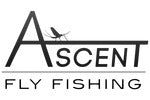
Tips & Tactics for Catching Trout in the Midst of Massive Hatches!

Pick Your Target
The shear magnitude of these mega hatches and the explosive response they cause in the trout can understandably be quite overwhelming! What you need to remember is that even if there are 1000 fish rising in front of you, you can only catch one fish at a time, so focus and pick your target. Beneath the surface of the river trout maintain a pecking order, holding and feeding within several feet of their specific piece real estate. From our airy vantage it may appear that there are 5 fish feeding behind a rock when in truth is just a solitary fish can surface to feed every few seconds. Remember to breath, pick your target, look upstream and place your flies in the feeding lane above of your target fish. Set, net, retarget, cast and repeat!
Make it a Triple
When the surface of the water is laid out like an insect charcuterie board for trout, it helps to improve your odds by fishing two or even three fly patterns matching the hatch and life stage being targeted. Two Quill Midge Emergers trapped in the surface of the water fished behind a move visible dry fly, or three Matt’s Lead Trico Spinners are going to 2x-3x your chances of the trout picking your fly off the smorgasbord!

Smaller and Lighter
With so much food on the water, trout can choose to be selective. A small amount of light reflecting off of your tippet, or even a slightly oversized imitation can be enough to cause fish after fish to refuse your offering. Try extending your leader with a short section of fluorocarbon tippet to reduce light reflection off of your rig, and reduce the size of your flies one hook size smaller than the naturals to help improve your chances!
Think Outside the Box with Outlier Patterns
Even when there is an abundance of food on the water, trout will be attracted to and are more likely to target insects (and fly patterns) that perceive as easy prey and therefore easy calories. Emerging insects struggling to break the surface of the water (imitated by Mole Flies or Quill Midge Emergers for midges, Sparkle Duns or Parachute Emergers for mayflies, or Sedgehammer patterns for Caddisflies) will often be targeted before fully hatched, free floating and mobile adults. Crippled insects and the fly patterns that imitate this portion of every hatch that fails to fully leave their adolescent exoskeleton and cannot leave the water are too tantalizing for most trout to pass on, and they will pick out these tasty tidbits from among a blanket of healthy, fully emerged naturals!
If you spend enough time on the water, one day you will see the water begin to boil with the heads of rising fish as a hatch clouds the sky! When that day comes, remember to pick your target, make it a triple, go smaller and lighter, and to think outside the box with outlier patterns. After that it’s just set, net, retarget, cast and repeat!

Idaho’s Teton River and the inspiration for this article.


